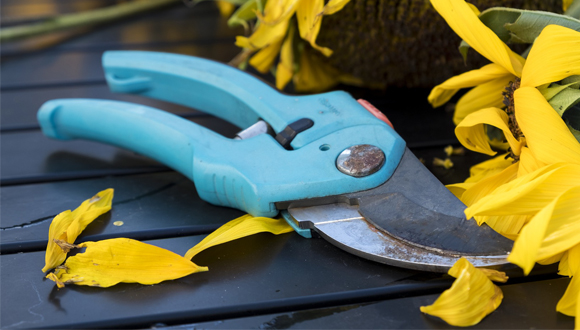

As spring is on its way, February is a good month to get on with some winter pruning jobs, cultivating and planning. To make the most of the mildest days, here are a few jobs that could be done:
• Preparation is key – it’s a good idea to check garden equipment, ensuring all tools are clean and pruning equipment is maintained. Secateurs can be cleaned with steel wool and a lubricating oil can be applied for ease of use. Make sure to check any electrical equipment is working to avoid frustration when the time comes to use it.
• Mulch around the base of fruit trees – this will help keep down weeds and hold in moisture.
• It’s a good time of year to apply organic fertilisers. As it releases nutrients slower, it will be available when the spring comes and the plants need it. Choose organic fertilisers like fish blood and bone or pelleted chicken manure, as both of these will help introduce nutrients back into the soil. Whilst you are fertilising it’s a good chance to weed and dig over borders too.
• Planting bare-root trees and shrubs can be done during the dormant season between November and March. Don’t forget to ask in store for our availability lists for bare-root stock – or take a look at our interactive online version HERE.
• Continue topping up bird feeders and ensure there is fresh water available.
• Pruning overgrown hedges will help improve the health and shape of the hedge. The majority of deciduous hedges can be pruned back hard. It’s a good chance to check for winter damage and tie up anything that needs to be supported at the same time.
• Top dress pot grown shrubs, scrape off the top layer of old compost and apply a fresh layer of new compost.
• To produce shoots that make good cuttings start by planting up dahlia tubers. They can be planted singularly or several can be put in a large tray. Place them in a sunny spot and spray them every now and again with water, this will encourage the buds to grow. The same can also be done with other summer flowering bulbs.
• Chit potato tubers.
• Tidy/clean out sheds, remove any old chemicals and chemicals that have since been removed from the market.
• Preparation is key – it’s a good idea to check garden equipment, ensuring all tools are clean and pruning equipment is maintained. Secateurs can be cleaned with steel wool and a lubricating oil can be applied for ease of use. Make sure to check any electrical equipment is working to avoid frustration when the time comes to use it.
• Mulch around the base of fruit trees – this will help keep down weeds and hold in moisture.
• It’s a good time of year to apply organic fertilisers. As it releases nutrients slower, it will be available when the spring comes and the plants need it. Choose organic fertilisers like fish blood and bone or pelleted chicken manure, as both of these will help introduce nutrients back into the soil. Whilst you are fertilising it’s a good chance to weed and dig over borders too.